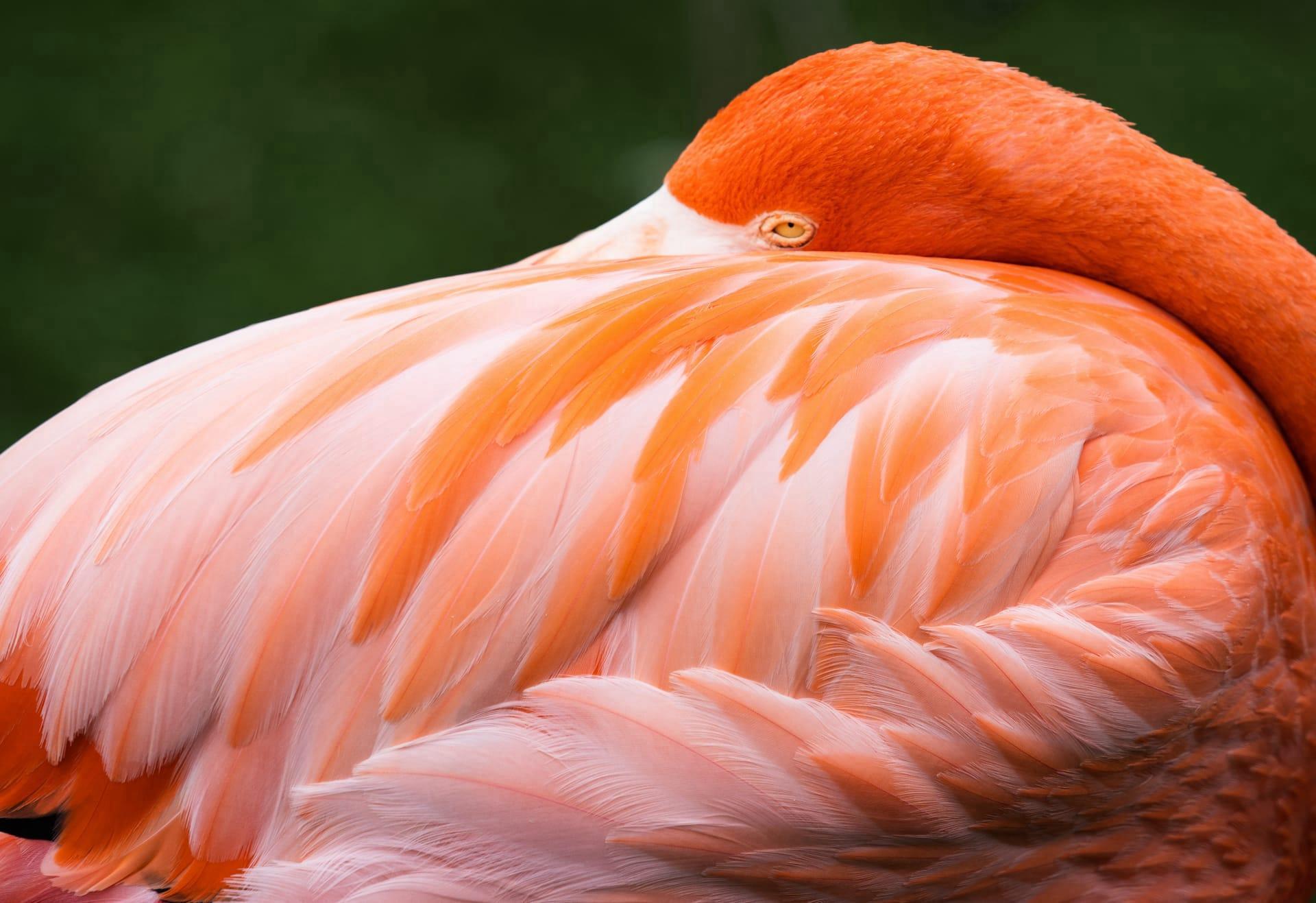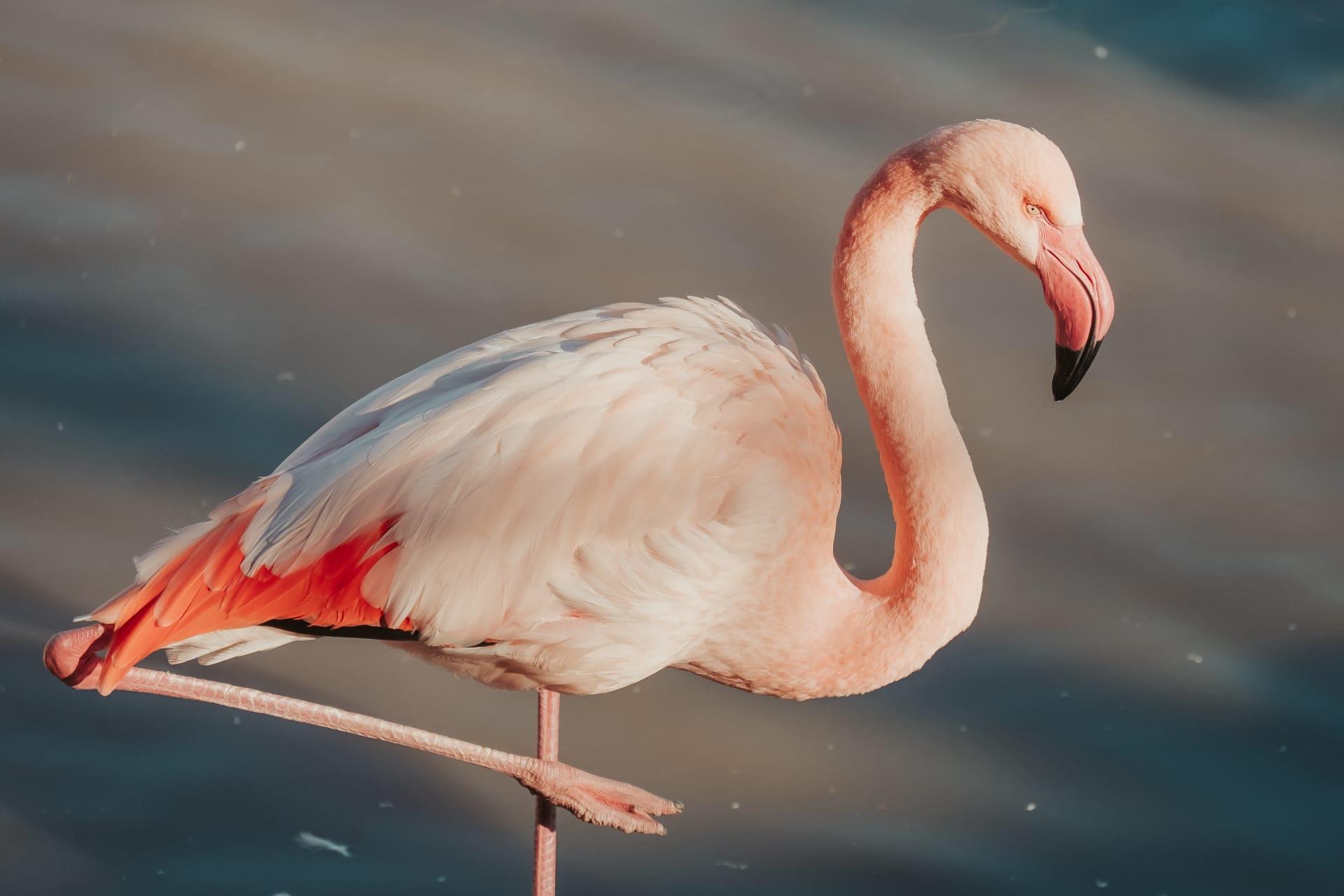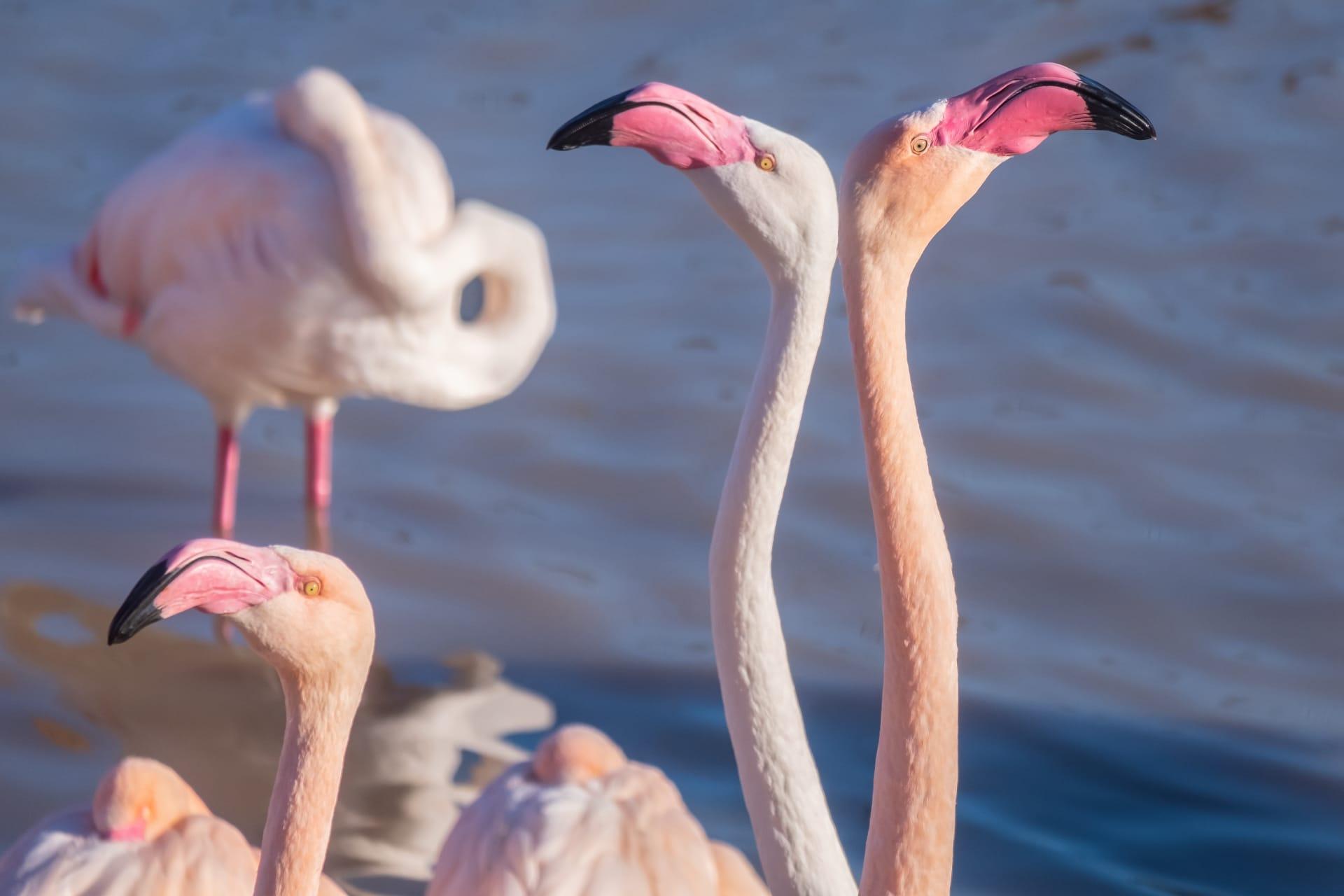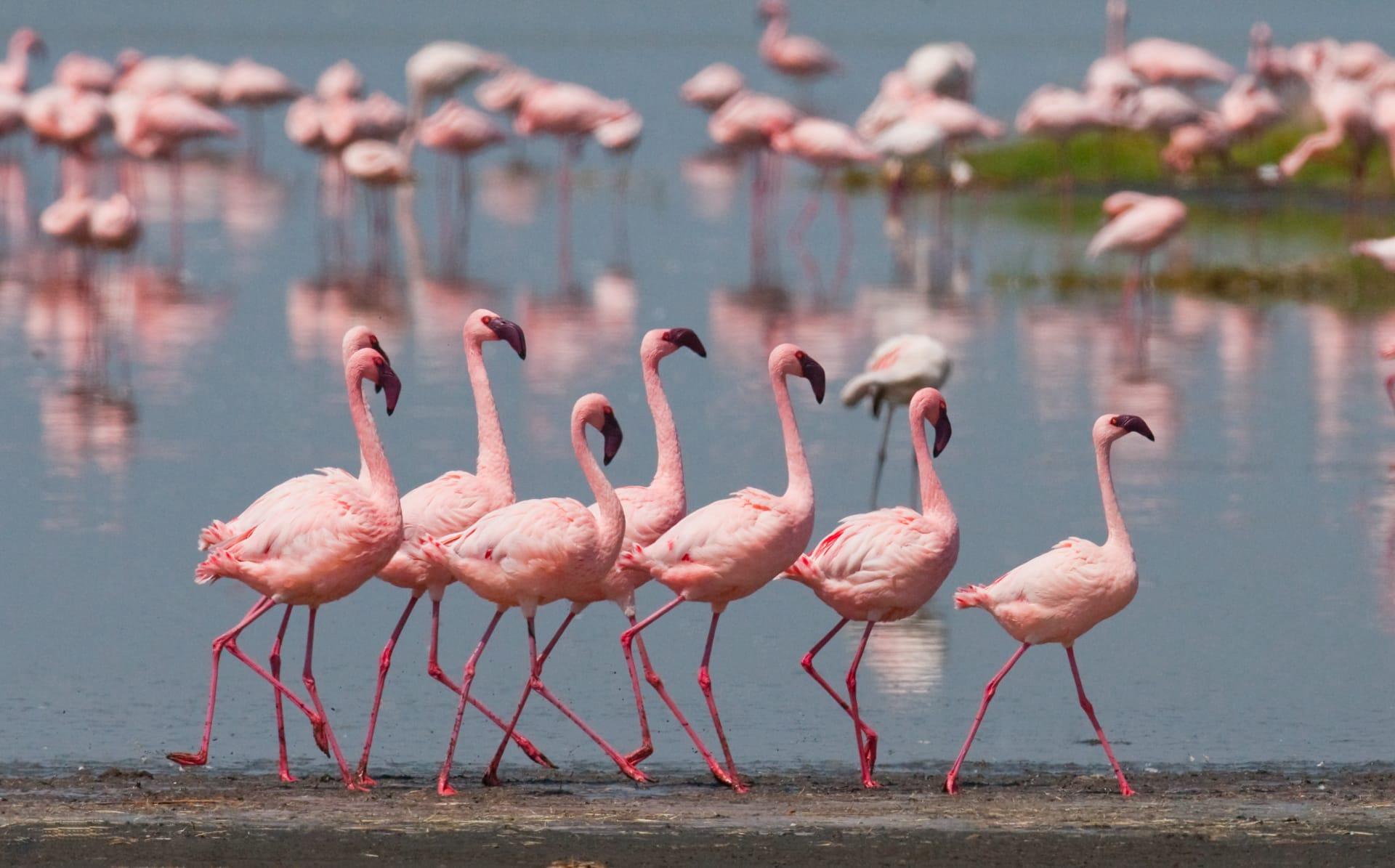1
Flamingos are famous for their pink feathers, but did you know this color comes from their diet? These birds eat algae and invertebrates like shrimp, which contain carotenoids, pigments that turn their feathers pink. The more carotenoids they consume, the more vibrant their color. Interestingly, flamingo chicks are born with gray feathers and only develop the pink hue as they grow and feed.
Another fascinating aspect of flamingos is their unique way of feeding. They feed by stirring up mud with their feet and then scooping up a beakful of mud and water. Their beaks are specially adapted to filter out food from the mud. The flamingo's beak is upside-down when it feeds. This unique feeding style is essential for their survival in salty lakes and lagoons where they live.

2
Did you know that flamingos can drink boiling hot water? In their harsh habitats, like the Andean highlands, water sources can reach temperatures of 60 degrees Celsius (140 degrees Fahrenheit). Flamingos can drink this scalding water without any harm, thanks to their specialized blood vessel system that cools the water before it reaches their body.
Flamingos are also known for their synchronized dances. These group dances are not just for show; they play a crucial role in their social bonding and mating rituals. Hundreds of flamingos will gather, and together they perform a series of coordinated moves like head-flagging, wing-saluting, and marching. This dance helps them establish connections and choose a suitable mate.

3
Flamingos have incredible balance. They often stand on one leg, even when sleeping. This behavior is thought to conserve body heat, as it reduces the amount of body surface exposed to cold water. Surprisingly, flamingos are more stable on one leg than two. Their one-legged stance is so efficient that a dead flamingo can remain standing on one leg without toppling over.
The longevity of flamingos is quite impressive. In the wild, they can live up to 30 years, but in captivity, their lifespan can extend to 50 years or more. The oldest recorded flamingo, known as "Greater," lived to be an astonishing 83 years old in an Australian zoo. This longevity is remarkable for birds and highlights their adaptability and resilience.

4
Flamingos have a complex social structure. They live in large colonies that can number in the thousands. These colonies offer protection against predators and are beneficial for breeding. Within these colonies, flamingos form strong pair bonds. While they are generally monogamous, changing a partner over the years is not uncommon.
Another intriguing fact about flamingos is their nest building. They construct their nests out of mud, and both parents take part in building a conical mud mound. The nest keeps their single egg safe from flooding and ground heat. These nests can be as high as 30 cm (12 inches) and are meticulously built to ensure the safety and development of their offspring.

5
Flamingos are not born with the ability to fly. They undergo a rigorous process of growing and developing flight feathers, which takes about 11 weeks. Once these feathers have fully developed, young flamingos undergo extensive practice to strengthen their wing muscles before they can take their first flight.
Lastly, the color of a flamingo's feathers can indicate its health status. A brighter pink color suggests a well-fed and healthy flamingo, while paler feathers might indicate a lack of nutrients. This color change is so reliable that zookeepers use it to monitor the health and diet of captive flamingos, adjusting their feed to ensure they receive the right amount of carotenoids for that healthy pink glow.